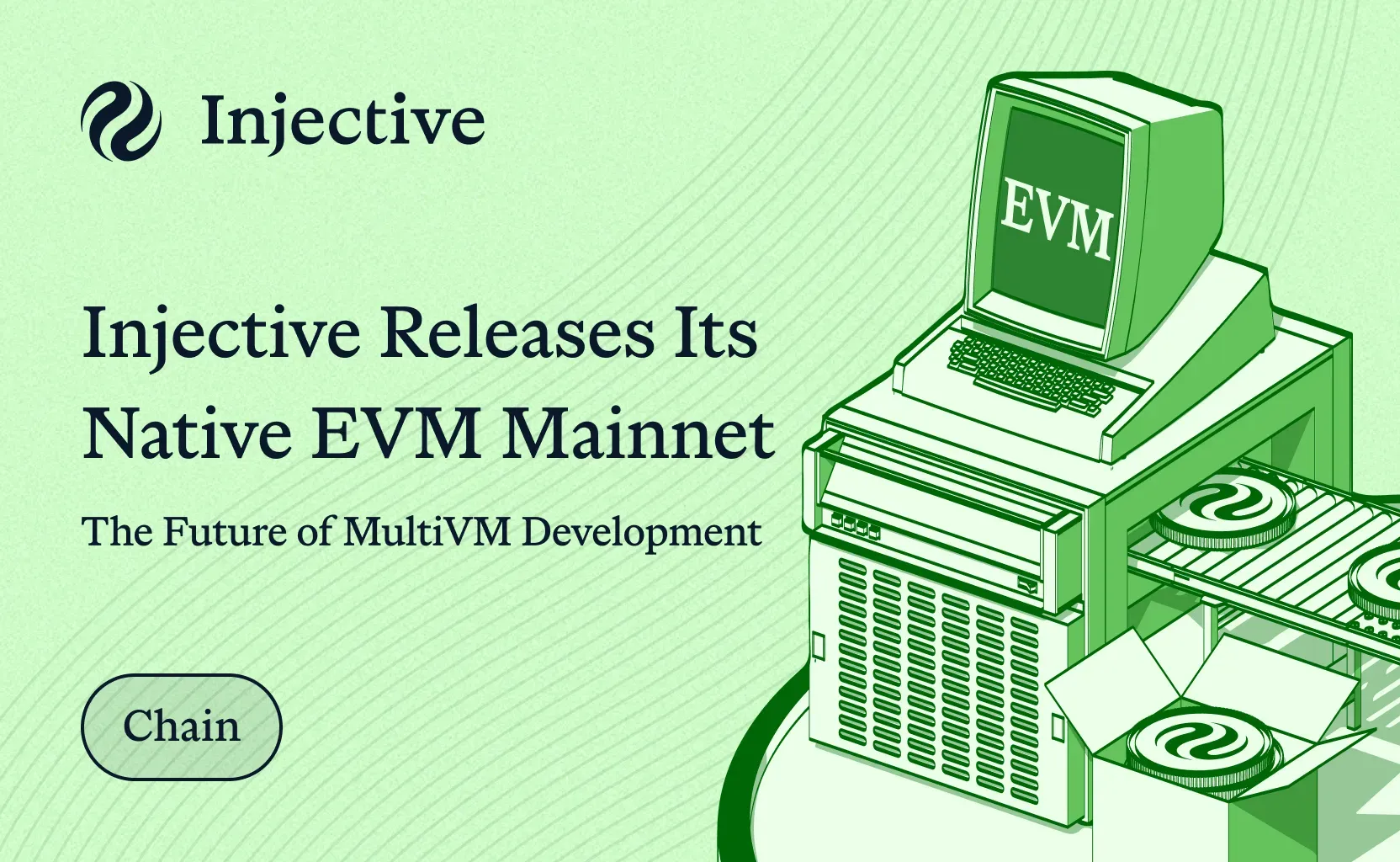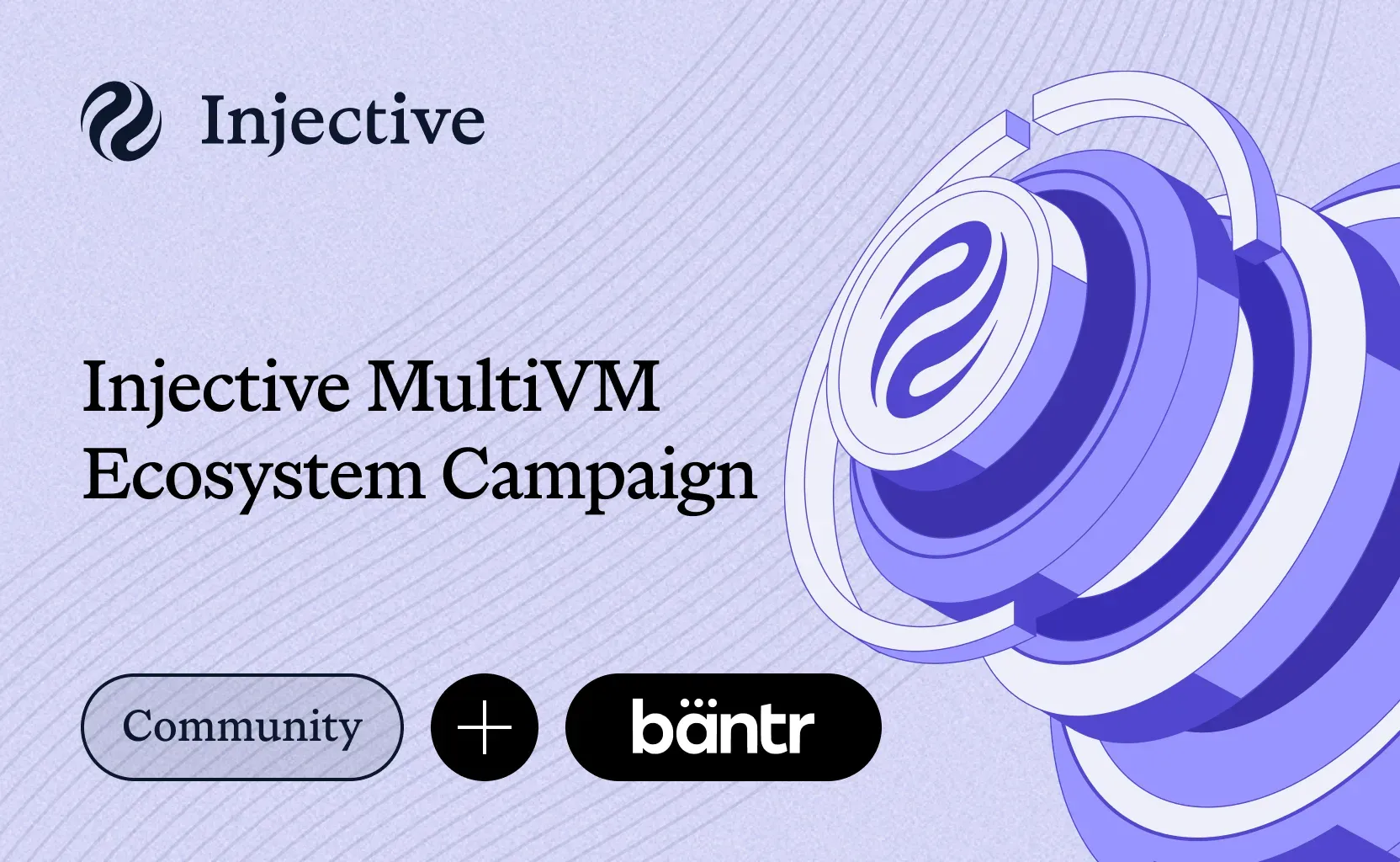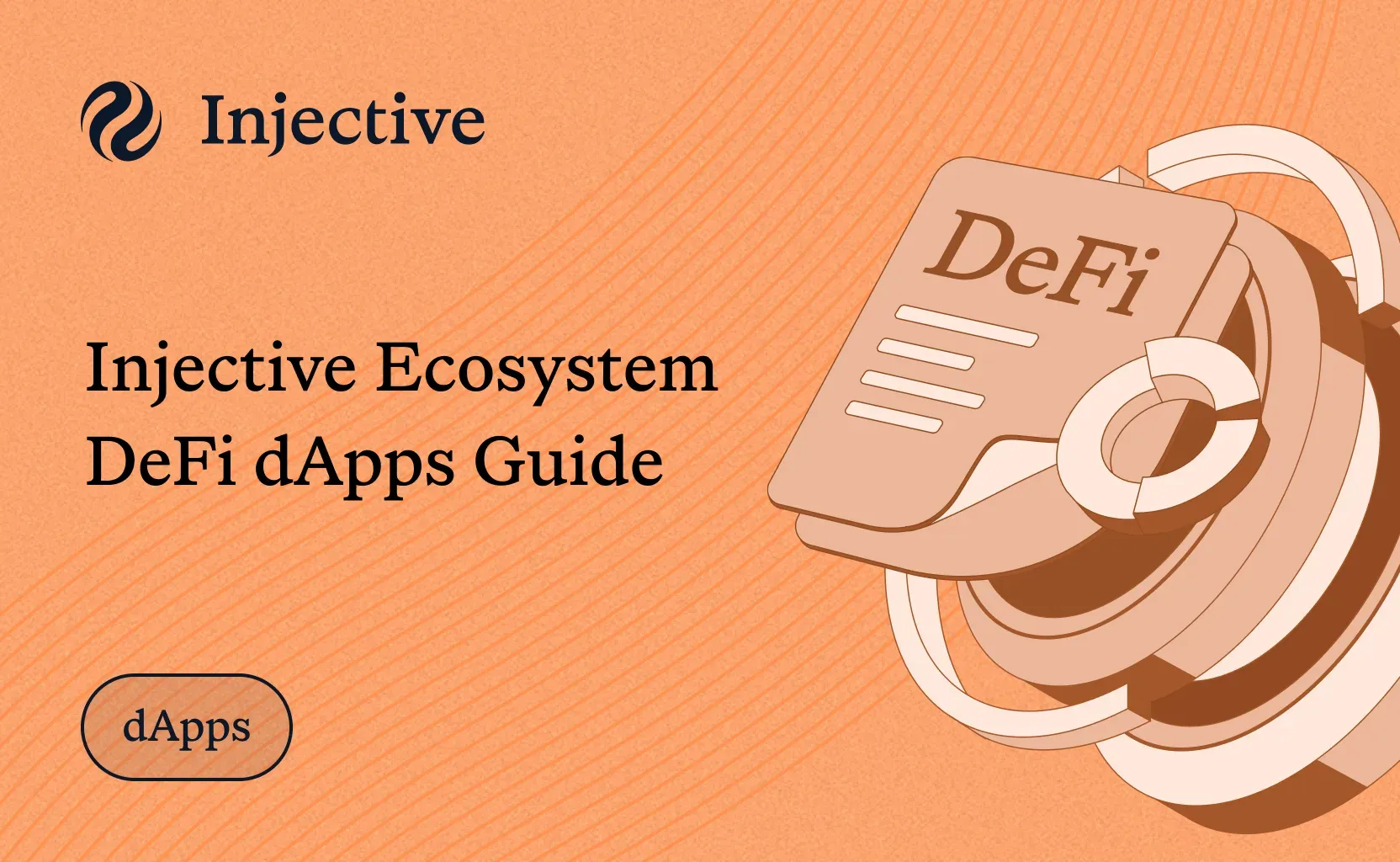What is a wrapped crypto asset?
On Injective, INJ is the cryptocurrency, which is what is used to pay for transaction fees on the network. You may have heard the term "gas", which is basically a way to meter transaction complexity. On Injective, INJ is used to pay for gas.
However, some dApps only accept ERC20 tokens in their technical interfaces. Most notably, decentralized exchanges (DEXs). INJ, being a cryptocurrency and not an ERC20 token, therefore does not work with them. The solution is to create an ERC20 token which wraps INJ, called "wrapped INJ". Its token symbol is wINJ. Thus any dApp that accepts ERC20 tokens accepts wINJ. DEXes, notably, can now trade and swap INJ, via wINJ.
The mechanism with which the wINJ token works is straightforward:
Mint: Increase the total supply when INJ is deposited.
Burn: Decrease the total supply when INJ is withdrawn.
In summary: Think of wINJ as an ERC20 token that is 1-to-1 collateralized with INJ. This allows wINJ treated as equal value to INJ, but with a different technical interface.
Is wINJ the same as wETH?
For those of you familiar with Ethereum, you may be thinking that this sounds the same as wrapped Ether (wETH). You are right, so far wINJ behaves in the same way as wETH.
However, note that the Injective network is designed with a MultiVM architecture. This means that if wINJ were to be implemented using a standard ERC20 implementation, as wETH does, wINJ would not be accessible when interacting with the the non-EVM parts of the Injective network (e.g. Cosmos transactions).
This is precisely the type of limitation that Injective's MultiVM Token Standard (MTS) was designed to solve.
Specifically, note this line:
contract WINJ9 is BankERC20, IWINJ9 {Instead of storing balances as uint256 values within the smart contract, as is typical of ERC20 implementations, the wINJ smart contract stored them in the Bank precompile. The magic happens in the _update function of BankERC20, where mint, burn, or transfer functions in the Bank precompile are invoked.
As those balances are stored and retrieved from Injective's native Bank module, they are also accessible from elsewhere within Injective's MultiVM architecture. For example, using the Cosmos SDK you can query the wINJ balances. This is the case even after updating them through EVM transactions; and vice versa. We refer to this as "native chain balances".
Check out a full demo of wINJ in action.
How can I use wINJ?
You have several options, depending on your level of technical proficiency. You can find more detailed explanations for using wINJ in the documentation site.
Easiest option - Injective Do
Interact with the "Wrap/ Unwrap" option under "EVM"
Intermediate option - Blockscout
Access the "deposit" and "withdraw" functions through Blockscout's UI for the wINJ smart contract:
Advanced option - wINJ smart contract
Programmatically send deposit() payable and withdraw(uint256 amount) transactions to the wINJ smart contract:
Injective Mainnet wINJ smart contract address: 0x0000000088827d2d103ee2d9A6b781773AE03FfB
Injective Testnet wINJ smart contract address: 0x0000000088827d2d103ee2d9A6b781773AE03FfB
Conclusion
Wrapped INJ (wINJ) is an ERC20 token allows INJ to be used where only ERC20 tokens are accepted. This is especially useful for DEXs.
This is just like wrapped Ether or any other wrapped cryptocurrency. However, on Injective, it is more powerful, because it also can be used across multiple VMs within the Injective network.
If you already have INJ and want to convert it to wINJ, or vice versa, you can do so programmatically by interacting with the smart contract directly. Alternatively, you can use dApps for convenience: Blockscout and Injective Do.

About Injective
Injective is a lightning fast interoperable layer one blockchain optimized for building premier Web3 finance applications. Injective provides developers with powerful plug-and-play modules for creating unmatched dApps. INJ is the native asset that powers Injective and its rapidly growing ecosystem. Injective is incubated by Binance and is backed by prominent investors such as Jump Crypto, Pantera and Mark Cuban.
Website | Telegram | Discord | Blog | Twitter | Youtube | Facebook | LinkedIn | Reddit | Instagram | Orbit Newsletter




